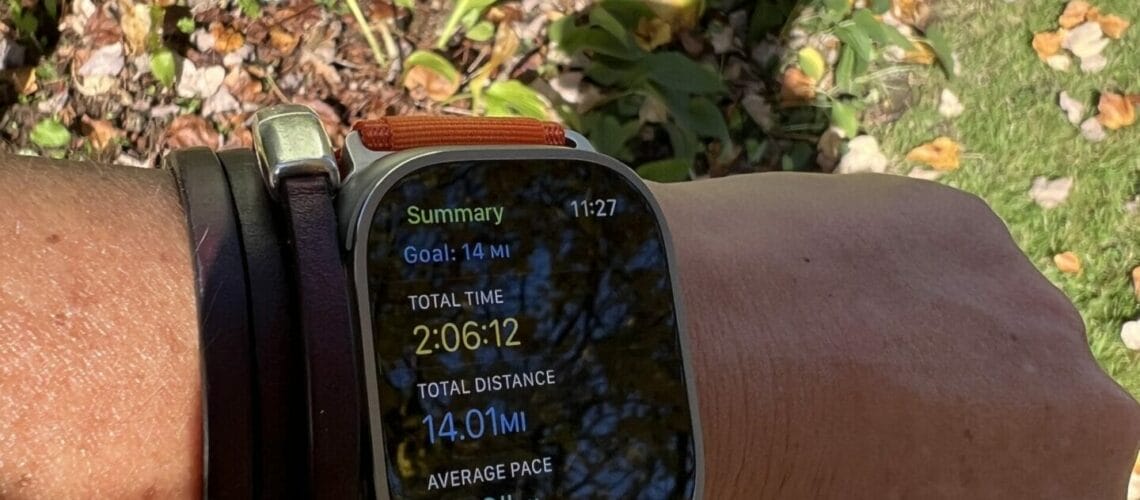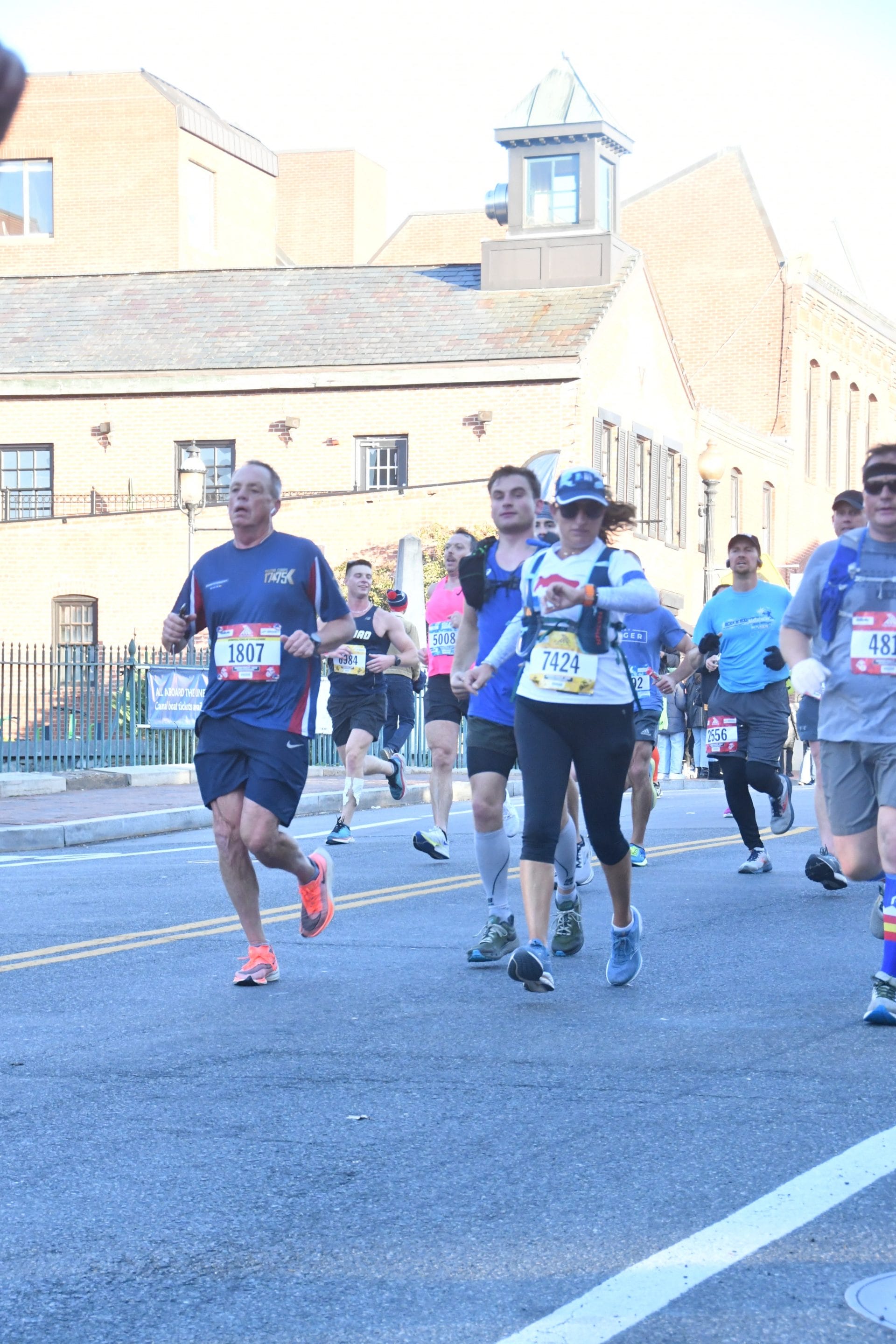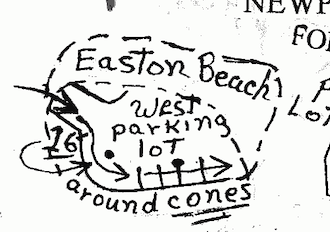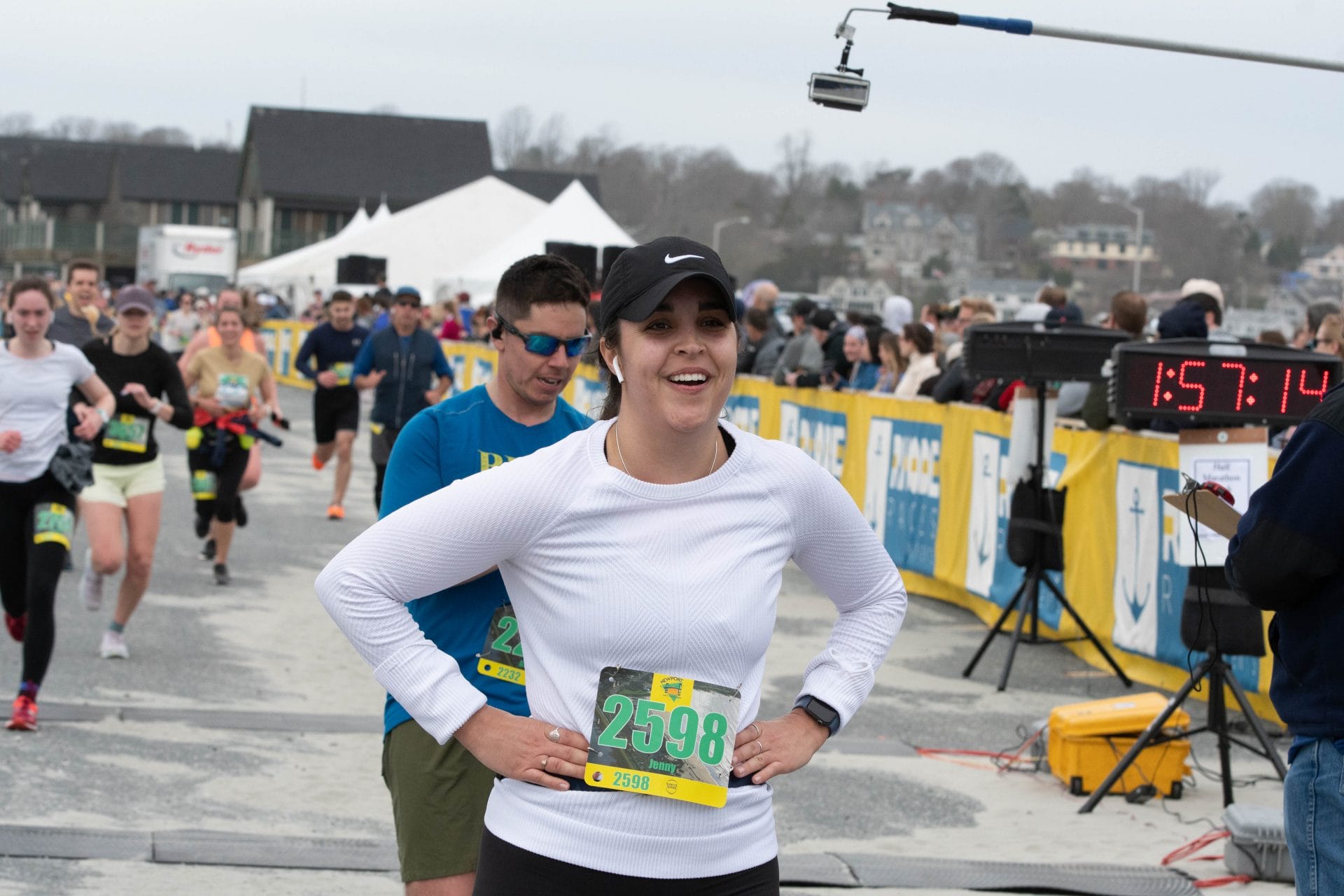
Running and road racing has evolved so much since my start in 1987, in so different categories. I still have one of the Nike Pegasus shoes that were given to us as members of the URI Track and Field team and I think most modern runners would be shocked to see what a Division 1 athlete was running in compared to today’s shoes! But no aspect of running has evolved as much as running watches, at least in my opinion. In just 10 short years, really since Garmins became wearable, the technology that you can measure on your wrist has become overwhelming. A review of my recent run brings up not just a sweet looking map + time elapsed and pace, I can view heart rate, wattage, cadence, calories burned, elevation, vertical oscillation, ground contact time, and stride length! Whew! Honestly – most of which I will never use. I really only care about distance + time = pace.
When I was in my late 30s, early 40s and did more triathlons and marathons then I do these days, I started taking the training a lot more seriously than I did in my teens and 20s. I had structured training plans and goals, but still no real way to measure execution as I had to guess on the distance based on my average pace, and that was really only given in a race. I knew I averaged ABOUT an 8 min/mi so if I had a 10 mile run, I would just run for about 80 mins, or some route that I had measured out in my car. Seems CRAZY to think about it, but that is how it was done. But I would run easier or harder, based on the time elapsed – but again, no way to measure that effort or the distance covered so it really was based on time and/or feel.

As more and more of us are wearing devices with GPS capabilities attached to our wrist, it certainly brings up some fun discussions on “what did you get on that run for distance” or “what was your pace on that segment.” We can measure our races and workouts based on time, distance, heart rate, zones – you name it! How many of us have run past our house a couple times until we hit that EXACT distance we wanted to run – God forbid if you stop your watch at 4.83 miles instead of the whole 5.0 miles! You should be tarred and feathered! We have become so dependent on our watches that coaches often prescribe a no-watch run – “go out by feel…..” (any one else get shivers at the thought of that!) And lately there is a big discussion on the Strava effect – that people are so concerned with being judged online from their workout posts that they are not taking the recovery days or easy runs they need to become a better runner. But a running watch has become an important tool in our arsenal to be better (and safer in many cases) runners.
But as an RD, my FAVORITE result of the proliferation of the running watch is the runner who irately reaches out after a race and lets us know that our USATF certified course was long! If your GPS watch measures the course short, there likely was a problem – either with the course or your GPS. But – hold on to your hats – your GPS watch SHOULD measure the course long, if it logged it correctly. You should want that to happen. Why, you ask?!?!
It is important to note that any distance over your advertised course is considered acceptable for records and qualifying. For example, if you run 4 miles on an advertised 5k course, it is still a legitimate 5k for record keeping purposes. If you run a Boston qualifying time of 3:30 on a USATF course that had a misplaced cone or volunteer and that actually added 1km to your 26.2 mi distance, you are still qualified for Boston. If that misplaced cone or volunteer causes the course to be short of the full 42.195km distance, you are NOT a Boston Qualifier.

While GPS technology has exploded in recent years, measuring a race course is still distinctly old-school. It utilizes a bike that has a specialized measuring tool called a Jones Counter. USATF does not allow for GPS measuring – there is a dude (or a woman, not to be gender-specific), that often risks life and limb to ride the SPR (or shortest possible route) of the course on a bike with his calibrated Jones Counter to measure the distance. This usually means they are up at the crack of dawn to avoid cars etc as we don’t close the road when our poor certifier has to measure a new course. BUT the goal to the measurement is to ride the tangents, to find the shortest possible route that a runner would be able to run on race day, that means he has to ride a route that could have closed roads on race day. Often times, our certified maps will come back with specific locations as to where a cone or barricade should be placed to ensure that the race route matches the certified route.
You may see courses advertised as “wheel-measured” rather than certified. This means that someone with a measuring wheel has gone out and measured the course, but they may have not calibrated that measuring wheel, as it is required with a certifier and/or they did not take the time to find the tangents and measure the SPR.
All this is not to say that a certifier doesn’t start by using GPS tools to get a general idea of the course before he heads out. In fact, because GPS measuring tools are pretty accurate, the certifier has the course set likely to a few feet or yards before he heads out on his bike. Again – as mentioned due the inherent danger or riding a bike with cars being in the road, it is not something that they want to do multiple times! Getting a course certified is a time consuming and detail-oriented process, requiring hours of taking a few feet here to make up a few feet there to get the exact distance needed – its a little bit of an art, if you ask me. I know we have some people ask “why do we run through a parking lot or jog through that neighborhood?!?!” – well the answer is that this is really the only way we can get that little bit of distance that is required to have a start and finish where we need it to be. If the race course is LESS than the certified distance, no one’s finish time would make them eligible for qualification or record keeping. If the course is a bit longer, that would be ok – except participants would hate us for making them run longer than necessary!
So if your GPS measured longer, that would be good thing as you are NEVER going to run all the tangents in a race, it is nearly impossible to run the SPR. There are other participants you are dodging and weaving, you run to aid stations which are off the SPR, even the lead in a race does not run straight and true. And all of this doesn’t even account for the fact that the watch on your wrist is not an exact measurement – it is affected by clouds, buildings, your arm swing, clothing, etc.
(If you really want to learn just how specific and intensive certifying a course can be, I highly recommend this podcast. I had an idea of what our certifier did for us, but I had a whole new admiration for his work after listening. I get that I am a running nerd but I just found this podcast fascinating.)

One final comment about your running watch and racing, we also often get contacted after a race by a participant that states that his chip did not register as he crossed over either the start or finish mats. More often than not – it is because the participant has reached for their watch to start or stop it at the exact same time as when the mat is trying to read the chip and the arm disrupts the radio frequency. Our race photographer calls this the “dreaded Garmin grab” as it also blocks your bib number from being tagged in race photos – plus it makes for a boring finish line picture! It is important to remember that we can never use the result from your watch as your official finish so it is more important to leave your bib unobscured when crossing the finish line – and pose for a great photo finish instead. The only thing people will see in online race results are the timed and scored result, your watch is just for you – wait to hit that button!
Keep up with the latest from Rhode Races with our newsletter. Sign-up below:
Rhode Masters Series
Join us for our Rhode Island Running Tour; complete 3 or more races to receive our annual…
More Races
Event Management
Interested in having Rhode Races manage your next event? Contact us; we’d love to learn more!
